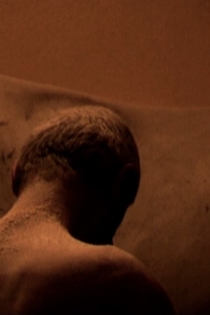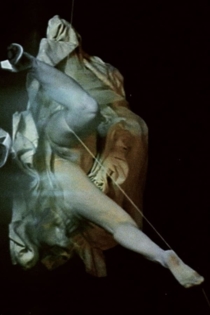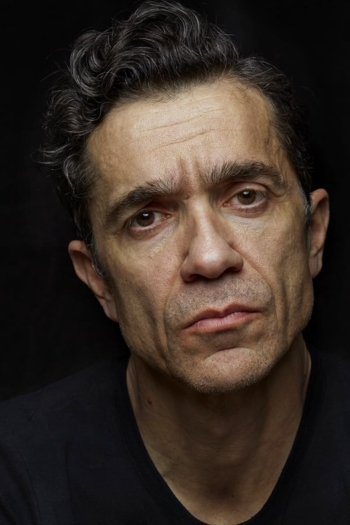
Romeo Castellucci
2021Parsifal
Romeo Castellucci
Hartmut Haenchen, Andrew Richards
A mythical performance from la Monnaie - Bruxelles. Parsifal is a strange and enigmatic work. At the end of his life, did Wagner wish to celebrate asceticism, which he himself had never practised? Did he fall upon his knees before the Cross, as claimed by Nietzsche? And what does the secret society of knights based on pure blood signify, desperately waiting for the saviour to regenerate it? What is the true nature of the opposition between the worlds of Klingsor and the Grail? What can Parsifal tell us today? In his artistic will and testament, Wagner condenses his moral idea of the world and returns to the roots of love and religion - to the very heart of art according to him. With the participation of conductor Hartmut Haenchen who is passionated by the score, Italian stage director Romeo Castellucci proposes an original reading of this brilliant work and explores the essence of Wagnerian ‘Kunstreligion’ in a different light.
Parsifal

Inferno
Romeo Castellucci
Dante's 'La Divina Commedia' is a poem in three parts about a journey to hell, purgatory and finally, paradise. Romeo Castellucci created his own free adaptation on the gigantic stage of the Cour d'Honneur in Avignon, in the palace where the first French pope, Clement V, resided. The pope allows Dante to descend into the inferno. We are confronted with man's confusion, the fragmentation of the community and the darkness of art.
Inferno

DAU. Degeneration
Ilya Permyakov, Ilya Khrzhanovsky
Vladimir Azhippo, Dmitry Kaledin
A secret Soviet Institute conducts scientific and occult experiments on animals and human beings to create the perfect person. The KGB general and his aides turn a blind eye to erotic adventures of the director of the Institute, scandalous debauches of prominent scientists and their cruel and insane research. One day, a radical ultra right-wing group arrives in the laboratory under the guise of test subjects. They get a task - to eradicate the decaying elements of the Institute’s community, and if needs be, destroy the fragile world of secret Soviet science.
DAU. Degeneration
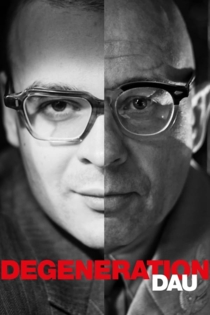
Purgatorio
Romeo Castellucci
Dante's 'La Divina Commedia' is a poem in three parts about a journey to hell, purgatory and finally, paradise. Romeo Castellucci created his own free adaptation of Purgatorio on the scene of Chateaublanc in Avignon (France). A mother, a father and their son live in a bourgois appartment where a terrible drama is suggested. The use of hors-champ and sound is wo,nderful as usual with Italian director Castellucci. Written texts appear as subtitles of a movie even if this is pure theater...
Purgatorio

TRAGEDIA ENDOGONIDIA - A.#02 AVIGNON
Romeo Castellucci
In an environment coloured with talcum powder, the Soldiers of Conception escort a Child-Judge as he walks backwards across the set. When he bumps into the Tables of the Law, reality is overturned and all interiors becomes exterior.
TRAGEDIA ENDOGONIDIA - A.#02 AVIGNON

Paradiso
Romeo Castellucci
The viewer is led through 2 adjoining rooms: a white anti-chamber that leads onto a very high, black room via a small door. In the Paradise of Cesena church, we are suspended in a region that is inaccessible to the human eye, where what can be seen is shown as a mark in the visible area.
Paradiso
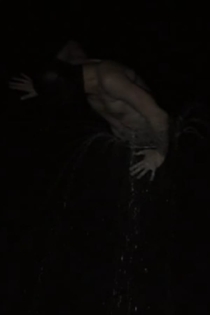
Democracy in America
Romeo Castellucci
Evelin Facchini, Olivia Corsini
Romeo Castellucci is one of Europe’s best-known directors, a firebrand known for productions that are as thought-provoking as they are visually stunning. He returns to Peak Performances with the American premiere of “Democracy in America,” freely inspired by the work of Alexis de Tocqueville. Castellucci conjures majorettes who stir the crowd’s enthusiasm for democracy in America, colonial settlers who confound the native Americans, and a puritan couple who struggle to farm a barren land. He asks us to consider the empty promises of a political system steeped in Biblical egalitarianism rather than the concept of tragedy so essential to ancient Greek democracy, the dangers of majority rule, and the inherent violence that springs from religious puritanism and territorial conquests. His challenging, soul-stirring brand of theatrical magic transposes these painful, profound ideas into an enticing, vibrant, celebratory work of art.
Democracy in America
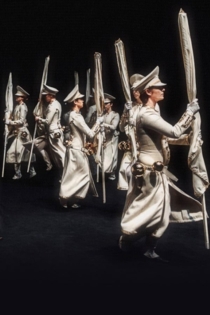
Das Floss der Medusa
Romeo Castellucci
Dale Duesing, Bo Skovhus
Hans Werner Henze’s “The Raft of the Medusa” is directly inspired by Théodore Géricault’s famous painting. The German composer sets to music the fate of 150 people who have been shipwrecked and abandoned to their destiny. This is a radical work that fluctuates between hope and inevitability, agony and sudden bursts of life. The Raft of the Medusa is an oratorio that was first performed in 1968. Fifty years on, the Italian director Romeo Castellucci underscores its immense modernity, drawing a striking parallel between Hans Werner Henze’s work and the current migrant crisis in the Mediterranean.
The Raft of the Medusa
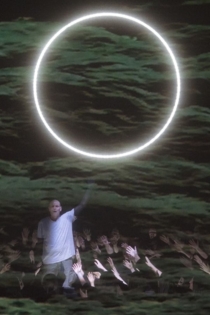
Theatron. Romeo Castellucci
Giulio Boato
Romeo Castellucci, Claudia Castellucci
Theatron, the film by the multi-award-winning film-maker Giulio Boato, is an unprecedented portrait of Romeo Castellucci. Castellucci and his theatre company, the Socìetas Raffaello Sanzio, are key protagonists of avantgarde theatre. To a Vivaldi soundtrack, Theatron layers Romeo and Claudia Castellucci’s comments with the testimonies of dramaturgs, composers, choreographers, critics and actors (including Willem Dafoe) who have collaborated with the director. Between rehearsals and international tours, the film is a deep reflection not just on the performances, but also on the connection between the author and the representation of human nature.
Theatron. Romeo Castellucci
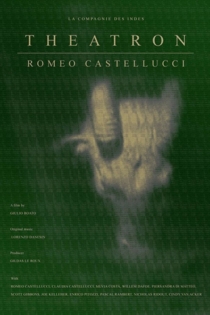
Moses und Aron
Romeo Castellucci
Thomas Johannes Mayer, John Graham-Hall
Moses und Aron is a three-act opera by Arnold Schoenberg with the third act unfinished. The 2015 Production was led by Romeo Castellucci in Paris. Moses und Aron was filmed for television by film director François-René Martin, in coproduction with the Paris Opera, Bel air Media and Arte, with support from the CNC. Moses und Aron was broadcast live on Arte concert and on the Paris Opera website on October 20th 2015, and subsequently broadcast on Arte on Ocotber 23rd 2015.
Arnold Schönberg: Moses und Aron
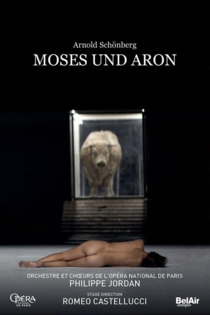
Orphee et Eurydice
Myriam Hoyer, Romeo Castellucci
Stéphanie d’Oustrac, Sabine Devieilhe
The myth of Orpheus and Eurydice tells of the impossible return to the land of the living by a woman who has been mortally wounded. The poet-musician Orpheus’s eventful journey in the world of shadows, searching for the one he loves and cannot let go, takes him to the Elysian Fields. This is an unexpected place of peaceful, composed of countryside and those in its thrall. It is here that Eurydice is now installed. During his journey Orpheus is thus introduced to a surprising reality: an enclave, a protected place, both near and yet inaccessible, disturbing, between life and death.
Orpheus and Eurydice
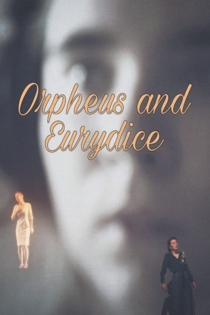
TRAGEDIA ENDOGONIDIA - B.#03 BERLIN
Romeo Castellucci
The Mother drags a lifeless girl from the bed in wich she was sleeping. Sloth, mortal sadness, is the word wich seals this woman’s destiny as she receives blows, luminous flows and sound stalagmites full in the face.
TRAGEDIA ENDOGONIDIA - B.#03 BERLIN

TRAGEDIA ENDOGONIDIA - R.#07 ROME
Romeo Castellucci
Mussolini is surrounded by pictures torn from a history-generated dream which gradually merge into everyday reality. Harlequin is the servant of two masters. The permanence of the clergy in the Eternal City is placed under a great bell which swings without a clapper.
TRAGEDIA ENDOGONIDIA - R.#07 ROME
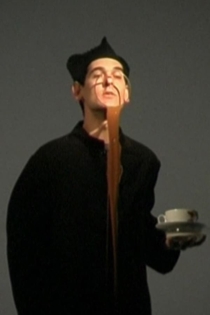
TRAGEDIA ENDOGONIDIA - BN.#05 BERGEN
Romeo Castellucci
The text “descends” from the goat, its language being composed of a set of phonemes based on the protein sequences contained in the body of the goat. The amino-acid sequences chosen for this next text are those responsible for cellular respiration, the growth of horns and putrefaction.
TRAGEDIA ENDOGONIDIA - BN.#05 BERGEN

